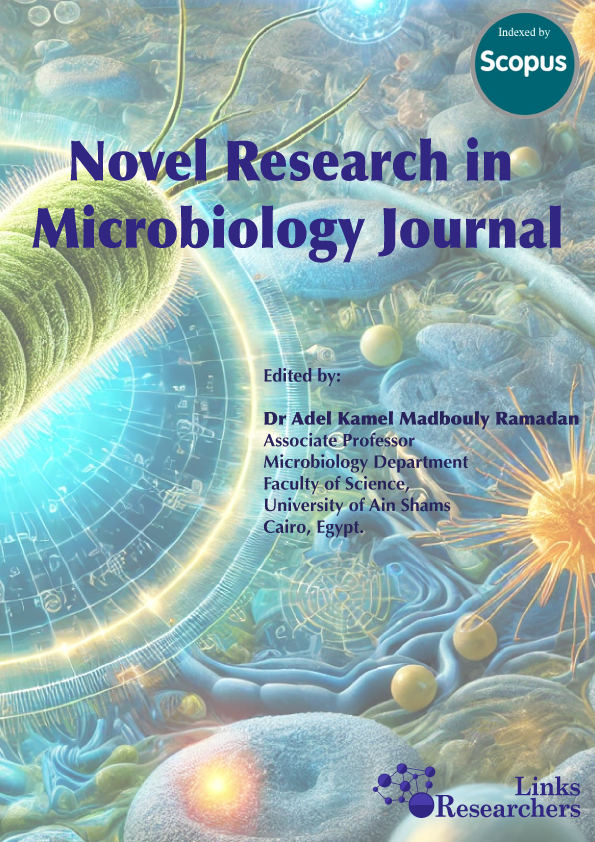Biosynthesis of metal nanoparticles using microorganisms and its medicinal applications
Novel Research in Microbiology Journal (2021), 5(1): 1077-1090
Biosynthesis of metal nanoparticles using microorganisms and its medicinal applications
Maysaa, T. Alloosh1*; Walid, I. Khaddam1; Adbulsalam, K. Almuhammady2
ABSTRACT
Nanotechnology is one of the most important technologies that enter into multiple fields, as it depends on the synthesis of particles with nano scale called nanoparticles (NPs). Biosynthesis of nanoparticles can be done using plants or microorganisms; however, synthesis of NPs using microorganisms is economical and an ecofriendly method. This review article provides highlights on the latest studies on using diverse microorganisms such as; bacteria, actinobacteria, fungi and algae for the biosynthesis of some metal nanoparticles including; silver, gold, palladium, selenium, magnesium, titanium dioxide, zinc oxide.. etc, under simple manufacturing conditions and within a short period that ranges from a few minutes to several days. The resulting NPs mostly show anti-fungal potential towards several fungal species that cause important human diseases mainly; Candida albicans and Aspergillus niger. Moreover, NPs has antibacterial efficacy against Staphylococcus aureus and Pseudomonas aeruginosa, which recently become less affected by several antibiotics like penicillin and methicillin. This review will help the researchers who work in biosynthesis of NPs and in the nano-medical application fields.
To share on other social networks, click on any share button. What are these?






